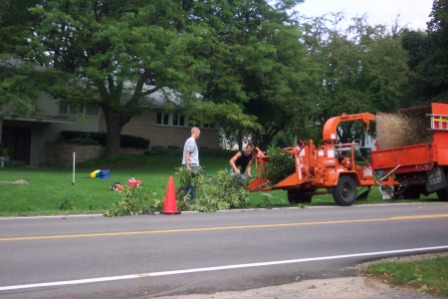I was driving around town recently and saw a tree service crew clearing up some storm damaged trees. Because of my line of work I usually do a little rubber-necking and try to assess why type of tree came down and what issues may have preceded it’s demise. In this case, however, I was struck not by the trees but by the tree crew. What I saw left me speechless. Well, here, see for yourself…

No eye protection. No hearing protection. No sign of a hardhat, face-shield, or chaps by the chainsaw. No personal protective equipment anywhere as near as I could tell. Of course the photo illustrates a lot of what’s wrong with the landscape and tree service industry. Economists tell us that this industry has a ‘low barrier to entry’; in other words any one with a chain saw and a pickup truck can put an ad in the classifieds and call themselves a tree service. As a consumer, you may not care if the employer makes their employees where personal protective equipment (PPE). But if they don’t care about their employees’ safety, what else don’t they care about?

Periodically I’ll write an article for a newspaper or other media on selecting an arborist. I always make the point that you get what you pay for and urge consumers to compare bids and companies carefully. Truly professional tree services have to cover the cost of hiring and retaining quality employees, worker training, proper equipment (including PPE), and insurance. If you skip over those things, like Fly-by-night tree service here, it’s probably not too hard to come out with the low bid.











